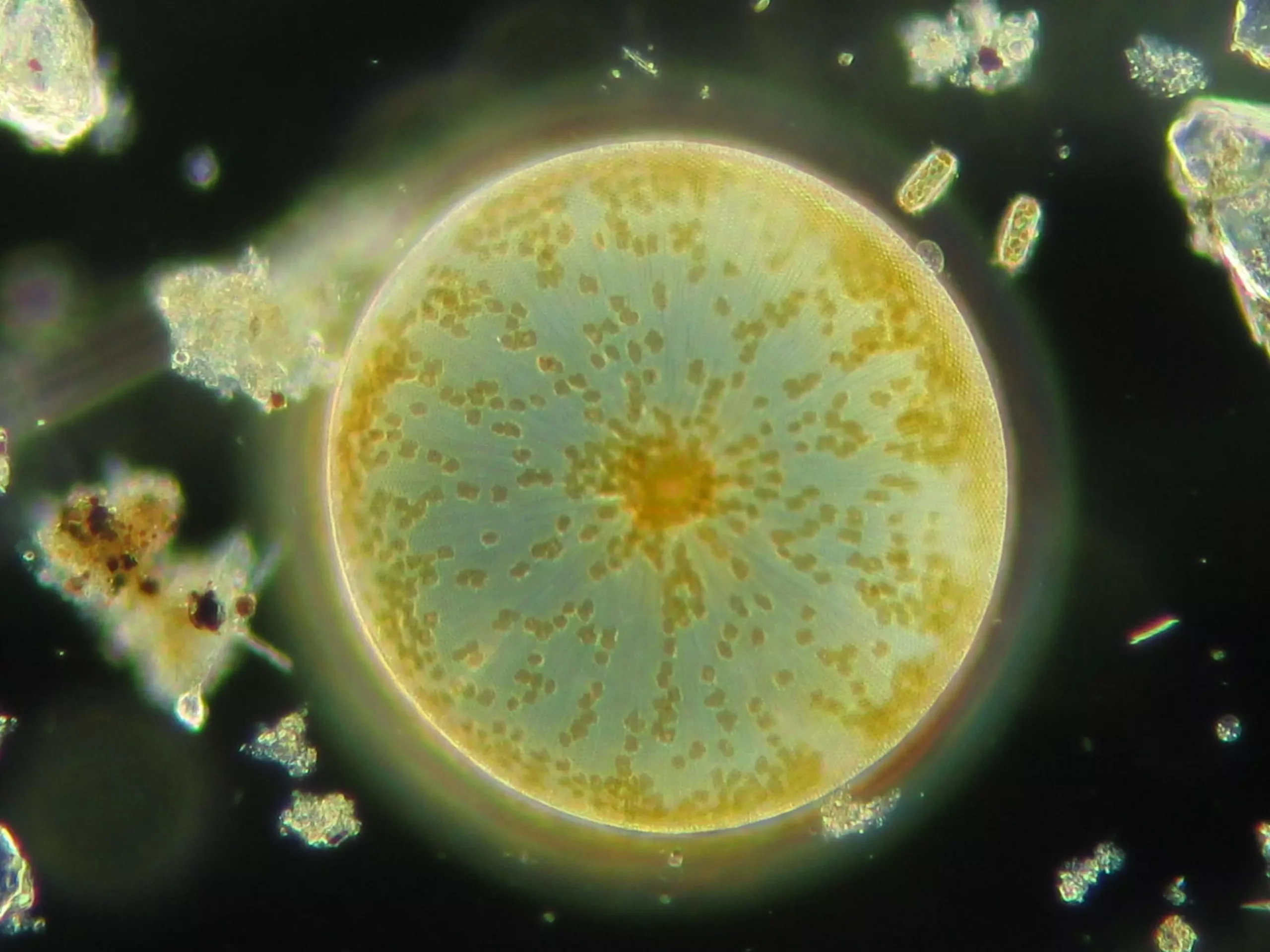

Phytoplankton, the microscopic organisms that perform photosynthesis in the ocean, play a crucial role in the global carbon cycle and have a significant influence on Earth’s climate. These tiny organisms capture and transport carbon (C) through the process of photosynthesis, and their growth relies on essential nutrients like nitrogen (N) and phosphorus (P). The key connections between phytoplankton and climate are established through their involvement in nutrient cycling, oceanic carbon pump, responses to climate-related factors, and food web dynamics.
In the 1930s, the American oceanographer Alfred C. Redfield made a groundbreaking discovery. He found that the concentrations of carbon, nitrogen, and phosphorus in marine phytoplankton roughly follow a fixed ratio of approximately 106:16:1, now known as the Redfield ratio. Redfield’s research also revealed that the concentration of nitrate, a primary nitrogen nutrient source, was consistently 16 times higher than the concentration of phosphate, a primary phosphorus nutrient source, in the seawater samples he collected.
The question of whether the nitrogen-to-phosphorus (N:P) ratio of the dissolved nutrient pool controls the ratio in particulate material, or vice versa, has long puzzled the marine science community. This “chicken-and-egg question” is the subject of investigation by Dr. Chia-Te Chien and his colleagues from the GEOMAR Helmholtz Center for Ocean Research in Kiel. Their modeling study, published in the journal Science Advances, examines the relationship between the ratios of nitrogen and phosphorus in dissolved and particulate matter in seawater.
To understand the relationships between phytoplankton physiology and nutrient ratios, the researchers utilized a computer model that coupled algal physiology with an Earth system model. By altering the characteristics of phytoplankton in the model, they could observe how changes impacted the nitrogen and phosphorus ratios in the water. Through an ensemble of 400 simulations, they explored the effects of varying nitrogen and phosphorus requirements for algae survival.
The model results provided insights into intricate feedback mechanisms involving phytoplankton nutrient content, oceanic oxygen levels, nitrogen-fixing phytoplankton, and denitrification. Contrary to previous assumptions, the study challenges the strong link between phytoplankton and seawater nutrient ratios, highlighting that these ratios are not inherently similar. Instead, the observed similarity between phytoplankton and seawater ratios is a specific state, subject to change in time scales beyond the duration of ocean in situ observations.
Traditionally, stoichiometric variations within phytoplankton and marine ecosystems were considered to have a minor impact on marine biogeochemistry and atmospheric CO2 levels. However, this study suggests that these variations may have a more significant influence than previously thought. The researchers emphasize the potential importance of phytoplankton subsistence nitrogen and phosphorus quotas in atmospheric CO2 levels on geological time scales.
The implications of these findings are far-reaching. The concentration of atmospheric CO2 and ocean and air temperatures are highly sensitive to variations in elemental stoichiometry induced by changes in phytoplankton physiology. Understanding these connections is crucial for making accurate predictions about the future evolution of Earth’s ecosystems and climate.
Phytoplankton physiology and the nutrient uptake of these microscopic organisms have a profound impact on the chemical composition of the ocean and even the atmosphere. This study highlights the significance of variable C:N:P ratios of phytoplankton in regulating dissolved oceanic nutrient ratios on a global scale. The analysis also underscores the critical role of marine oxygen levels in the Earth system. By delving into the complexities of phytoplankton stoichiometry, scientists gain valuable insights into the interplay between these organisms, nutrient cycling, and climate dynamics. This understanding is crucial for our ongoing efforts to mitigate and adapt to the challenges posed by global climate change.
Nitrogen, a fundamental element found in various forms, plays a crucial role in both agricultural…
For centuries, humans have been captivated by the enigma of chaotic systems, from the tumultuous…
The proliferation of synthetic polymers, particularly since the 1950s, has ushered in a double-edged sword.…
In a revealing study, researchers have turned their attention to an everyday indulgence: chewing gum.…
Neptune, the enigmatic azure giant of our Solar System, has long tantalized astronomers with its…
In an era where environmental degradation and climate change are pressing concerns, the quest for…
This website uses cookies.